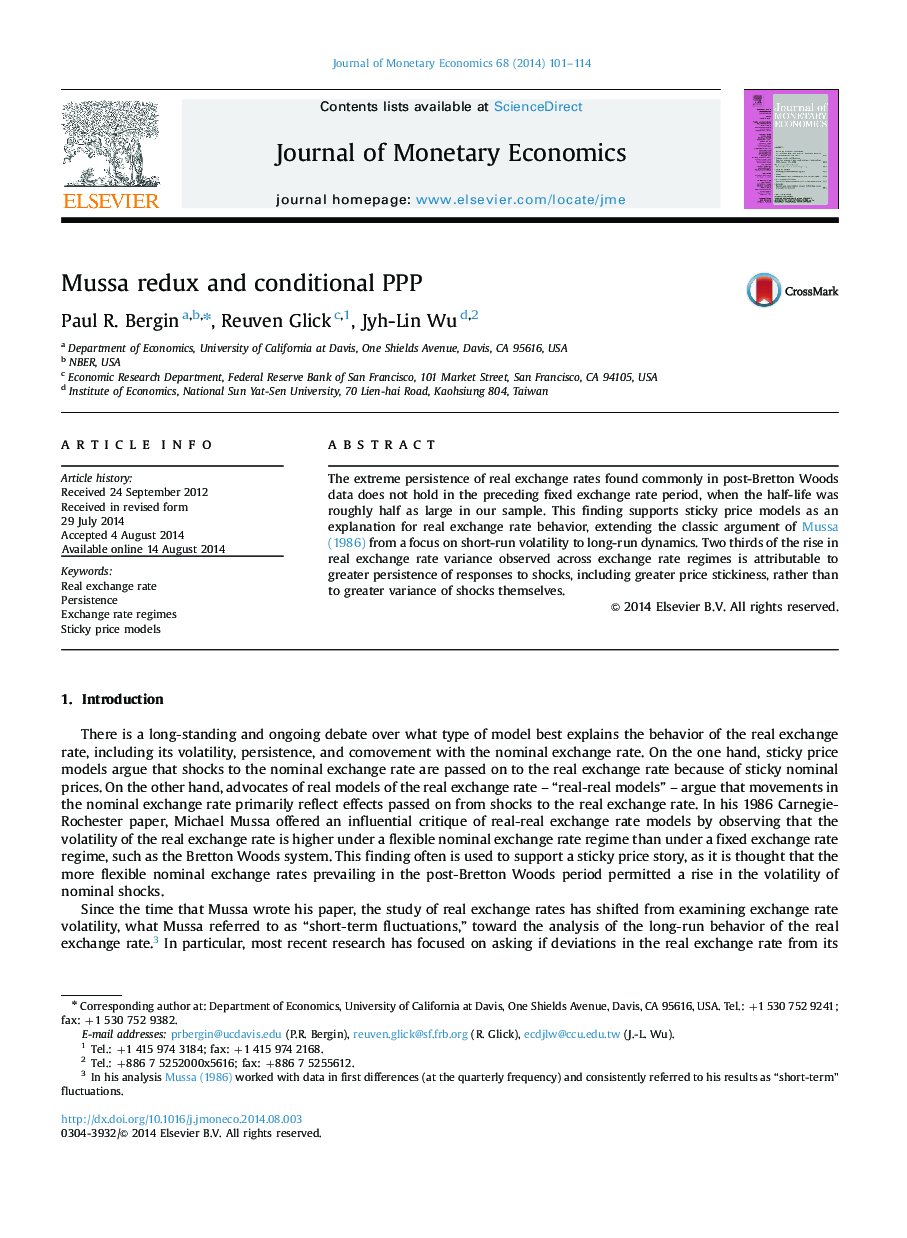| Article ID | Journal | Published Year | Pages | File Type |
|---|---|---|---|---|
| 967623 | Journal of Monetary Economics | 2014 | 14 Pages |
•We study how exchange rate regimes alter the half-life of the real exchange rate.•The half-life with flexible exchange rates is longer than during the Bretton Woods period.•This recasts the defense of sticky-price models by Mussa (1986).•Two thirds of the rise in real exchange rate variance is due to the rise in persistence.
The extreme persistence of real exchange rates found commonly in post-Bretton Woods data does not hold in the preceding fixed exchange rate period, when the half-life was roughly half as large in our sample. This finding supports sticky price models as an explanation for real exchange rate behavior, extending the classic argument of Mussa (1986) from a focus on short-run volatility to long-run dynamics. Two thirds of the rise in real exchange rate variance observed across exchange rate regimes is attributable to greater persistence of responses to shocks, including greater price stickiness, rather than to greater variance of shocks themselves.
